As important representatives of high-grade pipeline pipes, Q460GJB and
Q460GJC straight seam welded steel pipes play a key role in the fields of oil and natural gas transportation and building structures. These two sheets of steel have become indispensable materials in modern industry due to their excellent mechanical properties, welding properties, and corrosion resistance.
From the perspective of material properties, Q460GJB and Q460GJC are both low-alloy high-strength structural steels. The "Q" in their names represents yield strength, "460" means that the yield strength is not less than 460MPa, and "GJ" stands for "high-rise building", i.e. steel for high-rise buildings. Although the two have similar performance, there are differences in specific indicators: Q460GJB pays more attention to seismic performance and is suitable for building structures in earthquake-prone areas; while Q460GJC emphasizes welding performance and is more suitable for pipeline projects that require large-scale welding. Both types of steel adopt microalloying design and controlled rolling and cooling processes. By adding trace elements such as niobium, vanadium, and titanium, and cooperating with precise heat treatment processes, they achieve the perfect combination of high strength and good plasticity and toughness.
In terms of the production process, Q460GJB and Q460GJC straight seam welded steel pipes mainly adopt the JCOE forming process and high-frequency resistance welding (HFW) technology. The JCOE process forms the steel plate into a tube through multiple progressive bending and then completes the tube body through pre-welding, fine welding, and other processes. This process is particularly suitable for the production of large-diameter thick-walled steel pipes. High-frequency resistance welding is mainly used for the production of small and medium-diameter steel pipes, with the advantages of high efficiency and low cost. Regardless of the process used, the rolling temperature, welding parameters, and heat treatment system need to be strictly controlled during the production process to ensure that the steel obtains the ideal grain structure and mechanical properties. It is worth mentioning that modern production lines are generally equipped with automated testing equipment, such as ultrasonic flaw detection, X-ray detection, etc., to achieve full-process monitoring of product quality.
In terms of application areas, Q460GJB straight seam welded steel pipes mainly serve the building steel structure industry, especially high-rise buildings, large-span venues, and bridge projects. Its excellent seismic performance is particularly prominent in earthquake-prone areas, and it can effectively absorb seismic energy and ensure the safety of building structures. For example, in a high-rise building project in an 8-degree seismic fortification zone, the structural weight of Q460GJB steel is 15% lighter than that of traditional steel, and the seismic performance is improved by 20%. Q460GJC straight seam steel pipes are more used in the field of oil and gas transportation, especially in the construction of high-pressure long-distance pipelines. Its high-strength characteristics allow the use of thinner pipe wall designs, which not only reduces material costs but also improves transportation efficiency. In the West-East Gas Transmission Line 3 project, the pipe section using Q460GJC steel pipes achieved the design requirement of working pressure of 12MPa while reducing the amount of steel by about 10%.
From the perspective of industry standards, Q460GJB implements GB/T 19879-2015 "Steel Plate for Building Structures" standard, which has strict requirements on carbon equivalent and crack sensitivity coefficient to ensure welding performance and seismic performance; Q460GJC follows GB/T 9711-2017 "Steel Pipe for Oil and Gas Industry Pipeline Transportation System" standard, which particularly emphasizes the low-temperature toughness and corrosion resistance of steel. In actual procurement, users need to choose products that meet the corresponding standards according to specific application scenarios and focus on key indicators such as yield strength, tensile strength, elongation, and impact energy.
The current market situation shows that with the continuous advancement of my country's infrastructure construction and energy strategy, the demand for Q460GJB and Q460GJC straight seam welded steel pipes has maintained steady growth. Taking 2024 as an example, the amount of steel used in building steel structures will increase by 8.7% year-on-year, and the mileage of oil and gas pipeline construction will increase by more than 3,000 kilometers.
In terms of technological innovation, the development of Q460GJB and Q460GJC straight-seam welded steel pipes shows several obvious trends: first, the composition design is more precise, and the alloy element ratio is continuously optimized through computer simulation and experimental verification; second, the production process is developing in the direction of greening, such as using hydrogen heating, waste heat recovery and other technologies to reduce carbon emissions; third, the level of intelligence continues to improve, and the use of industrial Internet and big data technology to achieve quality traceability and predictive maintenance. The latest practice of a leading enterprise shows that through intelligent manufacturing transformation, the production efficiency of its Q460GJC steel pipe has increased by 22% and the defective rate has decreased by 35%.
In terms of usage recommendations, engineering units need to pay attention to several key points: first, do a good job in material acceptance, check quality certification documents, and conduct necessary re-inspections; second, scientifically design welding processes, especially the welding of thick-walled pipes requires control of interlayer temperature and heat input; third, pay attention to anti-corrosion treatment, and select appropriate coatings or cathodic protection solutions according to environmental conditions. Practice shows that the service life of Q460GJB/GJC steel structures or pipelines constructed strictly in accordance with specifications can reach more than 50 years.
Looking into the future, with the advancement of the "dual carbon" goal and the deepening of new urbanization, Q460GJB and Q460GJC straight seam welded steel pipes will usher in a broader development space. In the field of construction, the promotion of green buildings and prefabricated buildings will increase the demand for high-performance steel; in the field of energy, the construction of hydrogen energy pipelines and the transformation of old pipelines will create new market opportunities. It is expected that by 2030, the market size of high-grade straight seam welded steel pipes in my country is expected to exceed 10 million tons, with an annual growth rate of 6-8%.
In summary, as important materials for modern industry, the technical level and application scope of Q460GJB and Q460GJC straight seam welded steel pipes are constantly expanding. Relevant enterprises should seize development opportunities, strengthen technology research and development and market development, and provide users with better products and services; user units need to have a deep understanding of material properties, scientific material selection, and standardized construction. Only with the concerted efforts of all parties in the industrial chain can the value of these high-performance materials be fully utilized and greater contributions can be made to national infrastructure construction and energy security.
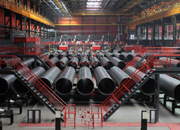 Threeway Steel is known as a professional supplier engaged in manufacturing and distributing a wide range of steel pipe, and our headquarter located the central part of China – Hunan and six associated factories throughout China.
Threeway Steel is known as a professional supplier engaged in manufacturing and distributing a wide range of steel pipe, and our headquarter located the central part of China – Hunan and six associated factories throughout China.
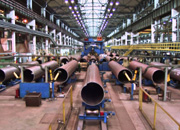 Threeway Steel is known as a professional supplier engaged in designing, manufacturing and distribution of a wide range of steel products with the headquarter located the central part of China – Hunan and six associated factories throughout China.
Threeway Steel is known as a professional supplier engaged in designing, manufacturing and distribution of a wide range of steel products with the headquarter located the central part of China – Hunan and six associated factories throughout China.
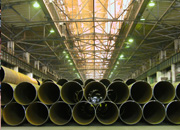 Threeway Steel is known as a professional supplier engaged in designing, manufacturing and distribution of a wide range of steel products with the headquarter located the central part of China – Hunan and six associated factories throughout China.
Threeway Steel is known as a professional supplier engaged in designing, manufacturing and distribution of a wide range of steel products with the headquarter located the central part of China – Hunan and six associated factories throughout China.
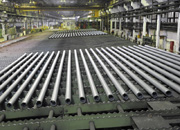 Threeway Steel is known as a professional supplier engaged in designing, manufacturing and distribution of a wide range of steel products with the headquarter located the central part of China – Hunan and six associated factories throughout China.
Threeway Steel is known as a professional supplier engaged in designing, manufacturing and distribution of a wide range of steel products with the headquarter located the central part of China – Hunan and six associated factories throughout China.
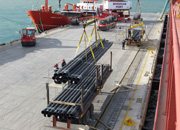 Threeway Steel is known as a professional supplier engaged in designing, manufacturing and distribution of a wide range of steel products with the headquarter located the central part of China – Hunan and six associated factories throughout China.
Threeway Steel is known as a professional supplier engaged in designing, manufacturing and distribution of a wide range of steel products with the headquarter located the central part of China – Hunan and six associated factories throughout China.

